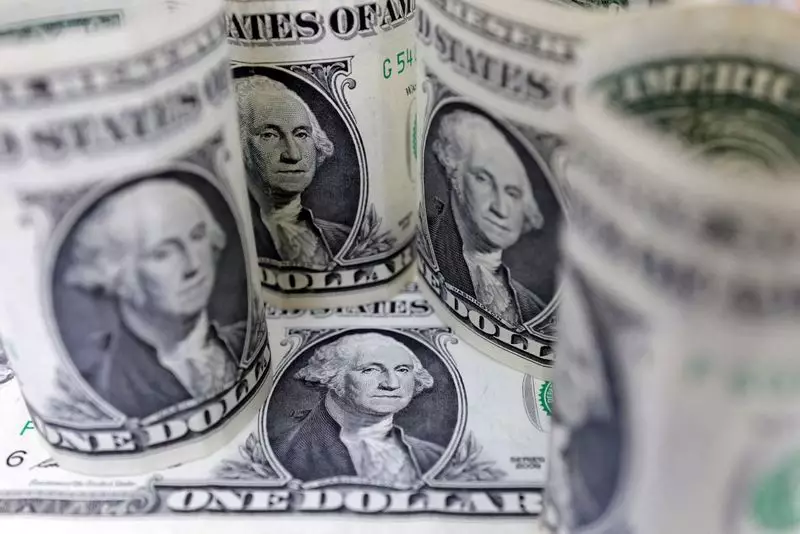The recent rally of the U.S. dollar to a 4-1/2-month high against major peers has triggered a flurry of activity in the financial markets. Traders have recalibrated their expectations for the Federal Reserve’s interest rate policy, leading to a surge in the dollar’s value. The dollar’s strength was further bolstered by positive U.S. manufacturing data, marking the first expansion since September 2022.
The rise in long-term U.S. Treasury yields, closely tied to the movement of the dollar, has also contributed to the currency’s upward trajectory. However, the surge in yields has had a detrimental effect on gold prices, which typically perform better in environments of falling yields. Gold, which hit a record peak, retreated as investors shifted their focus to the strengthening dollar.
The U.S. rate futures market now reflects a decreased likelihood of a Fed rate cut in June, with only a 61.3% probability compared to 70.1% a week prior. This adjustment underscores the diverging economic dynamics between the U.S. and other major currencies, prompting investors to view any dips in the dollar index as buying opportunities.
While the dollar gained against most major currencies, fears of intervention by Japanese officials limited its advances against the yen. Despite the significant jump in U.S. Treasury yields, the yen managed to firm slightly amidst concerns of disorderly currency moves. Finance Minister Shunichi Suzuki’s comments about potential intervention underscore the delicate balance in the currency markets.
The strength of the U.S. dollar has reverberated across the foreign exchange landscape, with currencies like the euro and sterling experiencing downward pressure. The Australian and New Zealand dollars also faced challenges, sliding to multi-month lows amidst the dollar’s ascent. The response of global currencies to the dollar’s strength highlights the interconnected nature of the foreign exchange market.
In the midst of these currency fluctuations, traditional safe-haven assets like gold have experienced volatility, with prices oscillating near record highs. Meanwhile, leading cryptocurrency bitcoin has maintained a relatively stable trading range, demonstrating resilience in the face of broader market shifts. The juxtaposition of these assets underscores the complexity of the current economic landscape.
The recent surge in the U.S. dollar has created ripples across global financial markets, impacting currencies, commodities, and investor sentiment. The interplay between economic data, central bank policies, and geopolitical developments will continue to shape currency valuations in the coming weeks. As investors navigate these uncertain waters, staying attuned to market trends and remaining flexible in their strategies will be crucial for managing risk and seizing opportunities in the evolving landscape of global finance.

